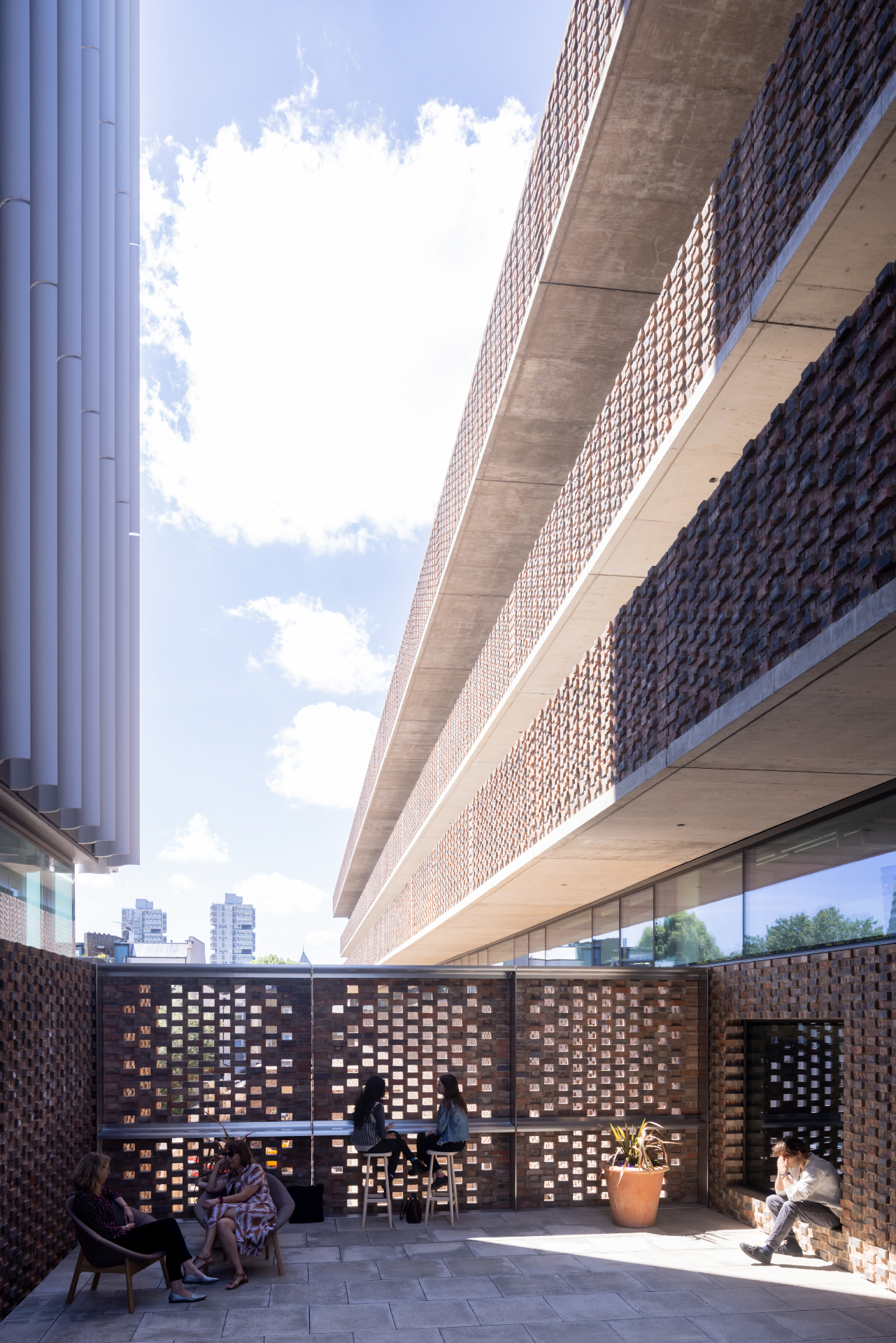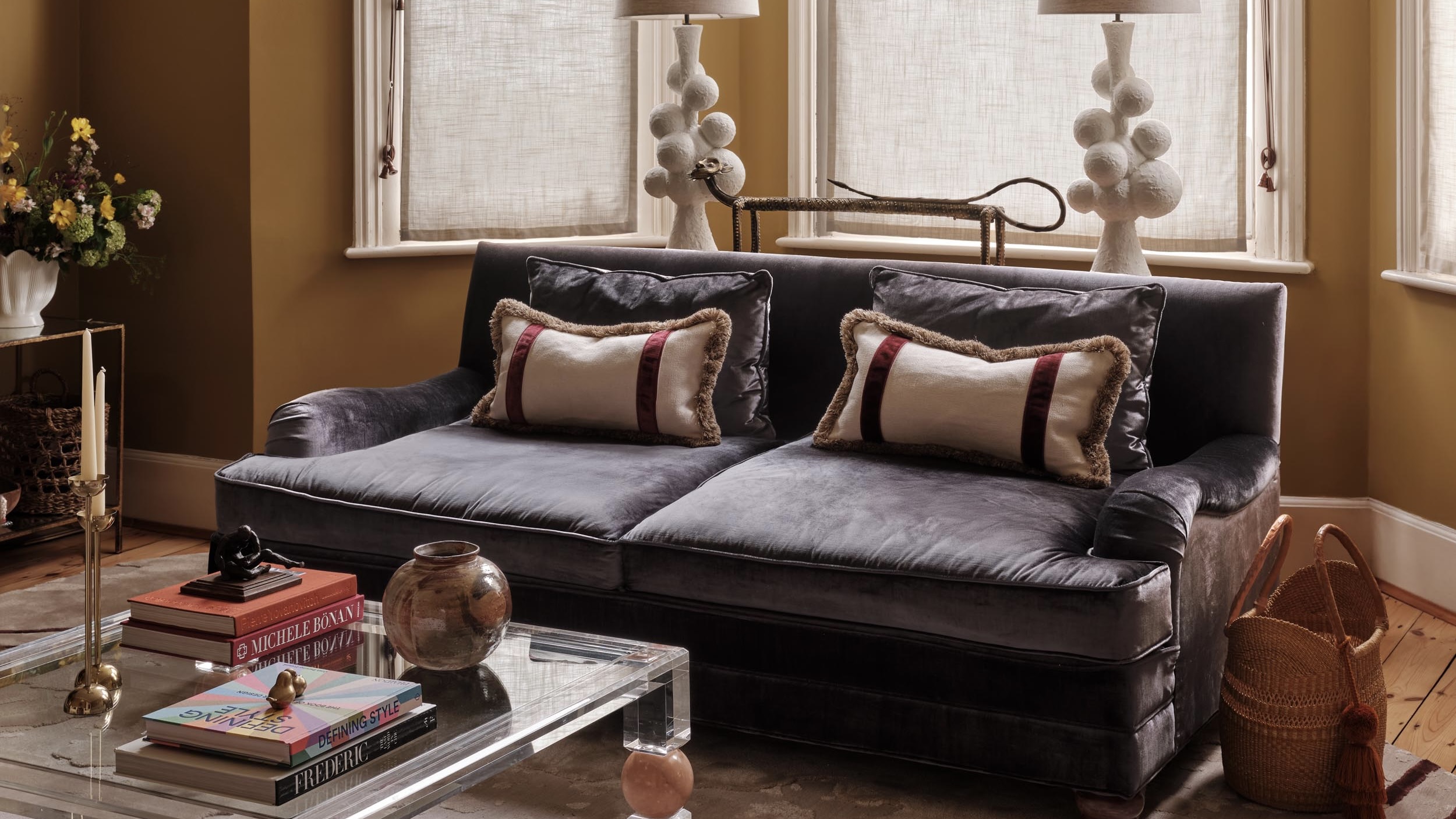Herzog & de Meuron’s RCA Battersea Campus Building is a porous workshop
The Royal College of Art Battersea Campus Building by Herzog and de Meuron opens to students in London

Iwan Baan - Photography
A robotic arm, quietly and relentlessly at work, may come into view as you walk around the new RCA Battersea campus in London. Its presence is the result of the freshly completed Royal College of Art Battersea Campus Building, which, designed by Herzog & de Meuron, has opened its doors for the university’s creative community. This visibility also emphasises the RCA's expansion, focus and transformation into a STEAM (science, technology, engineering, art and mathematics) postgraduate university, where subjects such as computer and materials science, robotics, advanced manufacturing and intelligent mobility are placed at the heart of the school.
Within this context, Herzog & de Meuron's relatively low, linear building feels like an ode to brick, featuring the Swiss duo and team's long-standing explorations in material, surface and texture. Clad mostly in brown blocks and glass and featuring hardwearing concrete floors, the new structure includes four storeys of studios and workshops (for art and design); The Hangar – a double-height, 350 sq m multifunctional activity space; a dedicated robotics space; a research and development section; a purpose-built home for the Helen Hamlyn Centre for Design; and a seminar and conference facility. The overall character seems industrial, utilitarian; this is a building conceived as a workshop.

Working with the neighbourhood's volumes, materials and heritage, the architects moulded a complex that is divided into two sections – a longer, lower, north one, defined by vertical, brick-clad lines and a sawtooth roofline, and a narrower south one that is not only taller, but also feels more ‘vertical' too, as it's wrapped in a layer of off-white fins. The two volumes are connected internally and externally through patios and a café that spills outside and invites the users to take over every corner (there is a public pathway to the café too, so anyone can join in). There's an openness and porosity throughout that was a strong part of the design intention, as the surroundings and passers-by are invited in, and departmental cross-pollination is encouraged.
Plenty of sunlight, natural ventilation and solar panels form part of the building's environmental strategies. ‘The RCA campus in Battersea is conceived as a porous and flexible “territory” of platforms upon which the varied needs of the RCA curriculum are given space to change and grow, enabling the transformation of space as needed during this process. The studio and research buildings are designed as communities unto themselves – place[s] that encourage interactions between students, faculty and staff. Our intention is also to create a civic connector, encouraging circulation through the site and inviting exchange between members of the RCA community, the neighbourhood and [the] wider city,' the architects explain.

The building opens with an exhibition curated by artist and photographer Rut Blees Luxemburg in its Hangar event space. ‘Future Archive' features an exploration of the building's construction process – from documentary photography of the volumes going up (some artfully created by Blees Luxemburg herself, as photographs printed on concrete slabs) to the participation of the building-site workers and more.
The show, which aims to ‘bring to the fore the often hidden narratives of architecture and construction’, will move to the RIBA on 1 June 2022, to mark the start of the London Festival of Architecture, and will remain there until 9 July.








INFORMATION
rca.ac.uk
Receive our daily digest of inspiration, escapism and design stories from around the world direct to your inbox.
Ellie Stathaki is the Architecture & Environment Director at Wallpaper*. She trained as an architect at the Aristotle University of Thessaloniki in Greece and studied architectural history at the Bartlett in London. Now an established journalist, she has been a member of the Wallpaper* team since 2006, visiting buildings across the globe and interviewing leading architects such as Tadao Ando and Rem Koolhaas. Ellie has also taken part in judging panels, moderated events, curated shows and contributed in books, such as The Contemporary House (Thames & Hudson, 2018), Glenn Sestig Architecture Diary (2020) and House London (2022).
-
 Eight questions for Bianca Censori, as she unveils her debut performance
Eight questions for Bianca Censori, as she unveils her debut performanceBianca Censori has presented her first exhibition and performance, BIO POP, in Seoul, South Korea
-
 How to elevate a rental with minimal interventions? Charu Gandhi has nailed it with her London home
How to elevate a rental with minimal interventions? Charu Gandhi has nailed it with her London homeFocus on key spaces, work with inherited details, and go big on colour and texture, says Gandhi, an interior designer set on beautifying her tired rental
-
 These fashion books, all released in 2025, are the perfect gift for style fans
These fashion books, all released in 2025, are the perfect gift for style fansChosen by the Wallpaper* style editors to inspire, intrigue and delight, these visually enticing tomes for your fashion library span from lush surveys on Loewe and Louis Vuitton to the rebellious style of Rick Owens and Jean Paul Gaultier